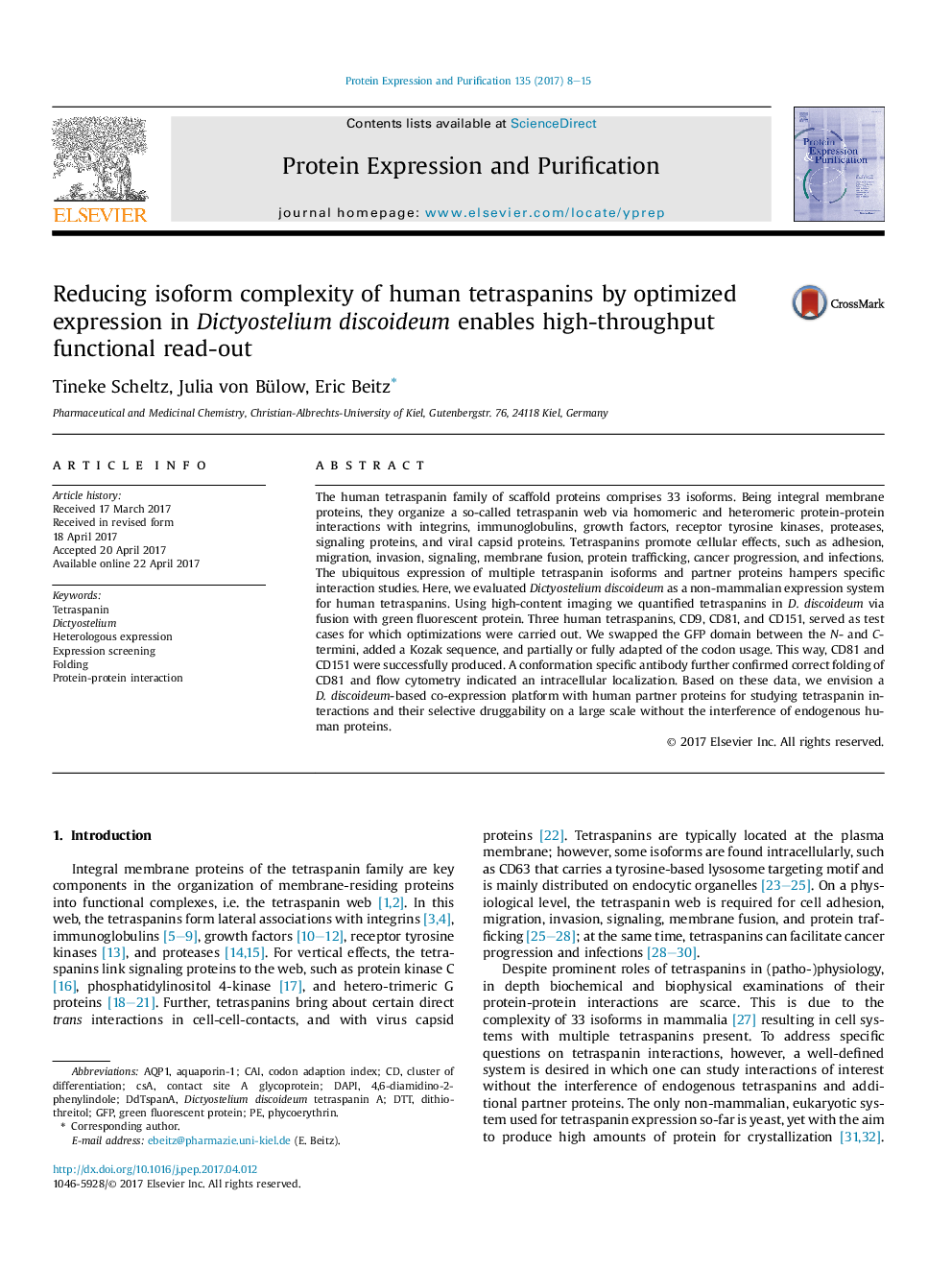| Article ID | Journal | Published Year | Pages | File Type |
|---|---|---|---|---|
| 5516035 | Protein Expression and Purification | 2017 | 8 Pages |
â¢High-content imaging allowed for rapid screening of expression conditions.â¢Human tetraspanins and aquaporin 1 were successfully expressed in D. discoideum.â¢Codon-optimization increased expression of human tetraspanin CD81.â¢Dictyostelium-produced human CD81 is correctly folded.
The human tetraspanin family of scaffold proteins comprises 33 isoforms. Being integral membrane proteins, they organize a so-called tetraspanin web via homomeric and heteromeric protein-protein interactions with integrins, immunoglobulins, growth factors, receptor tyrosine kinases, proteases, signaling proteins, and viral capsid proteins. Tetraspanins promote cellular effects, such as adhesion, migration, invasion, signaling, membrane fusion, protein trafficking, cancer progression, and infections. The ubiquitous expression of multiple tetraspanin isoforms and partner proteins hampers specific interaction studies. Here, we evaluated Dictyostelium discoideum as a non-mammalian expression system for human tetraspanins. Using high-content imaging we quantified tetraspanins in D. discoideum via fusion with green fluorescent protein. Three human tetraspanins, CD9, CD81, and CD151, served as test cases for which optimizations were carried out. We swapped the GFP domain between the N- and C-termini, added a Kozak sequence, and partially or fully adapted of the codon usage. This way, CD81 and CD151 were successfully produced. A conformation specific antibody further confirmed correct folding of CD81 and flow cytometry indicated an intracellular localization. Based on these data, we envision a D. discoideum-based co-expression platform with human partner proteins for studying tetraspanin interactions and their selective druggability on a large scale without the interference of endogenous human proteins.
Graphical abstractDownload high-res image (143KB)Download full-size image
